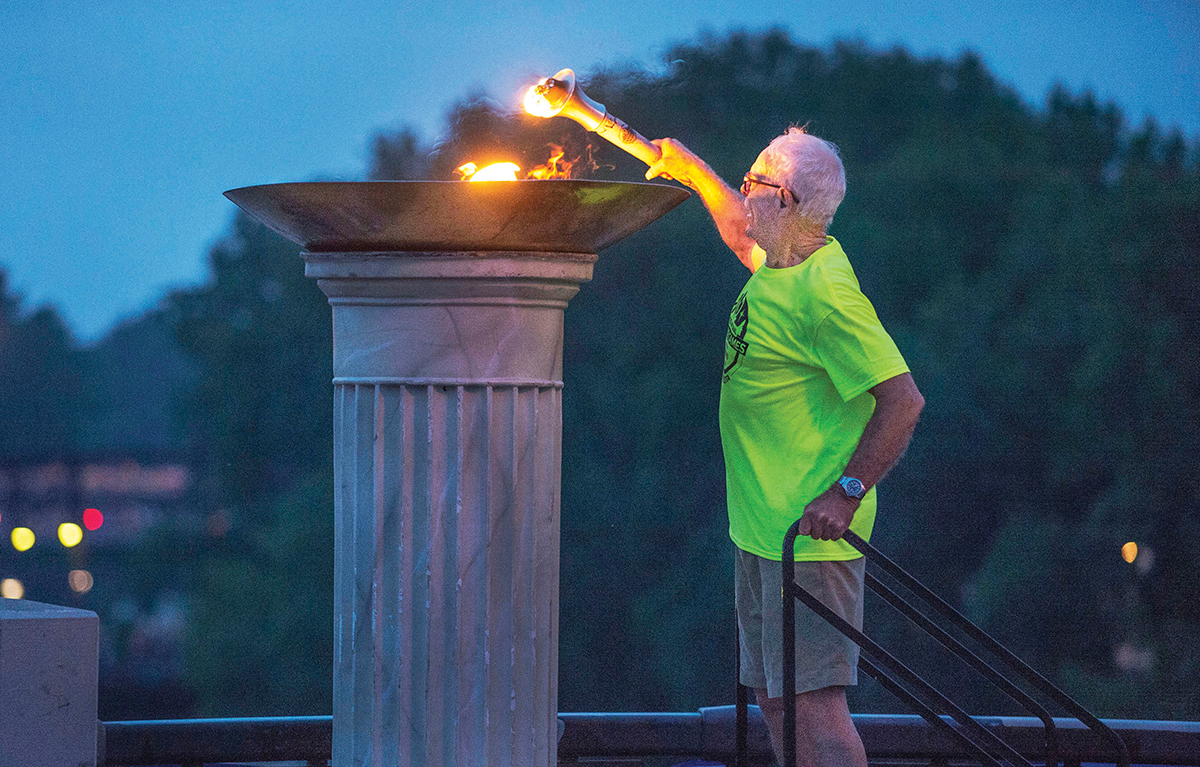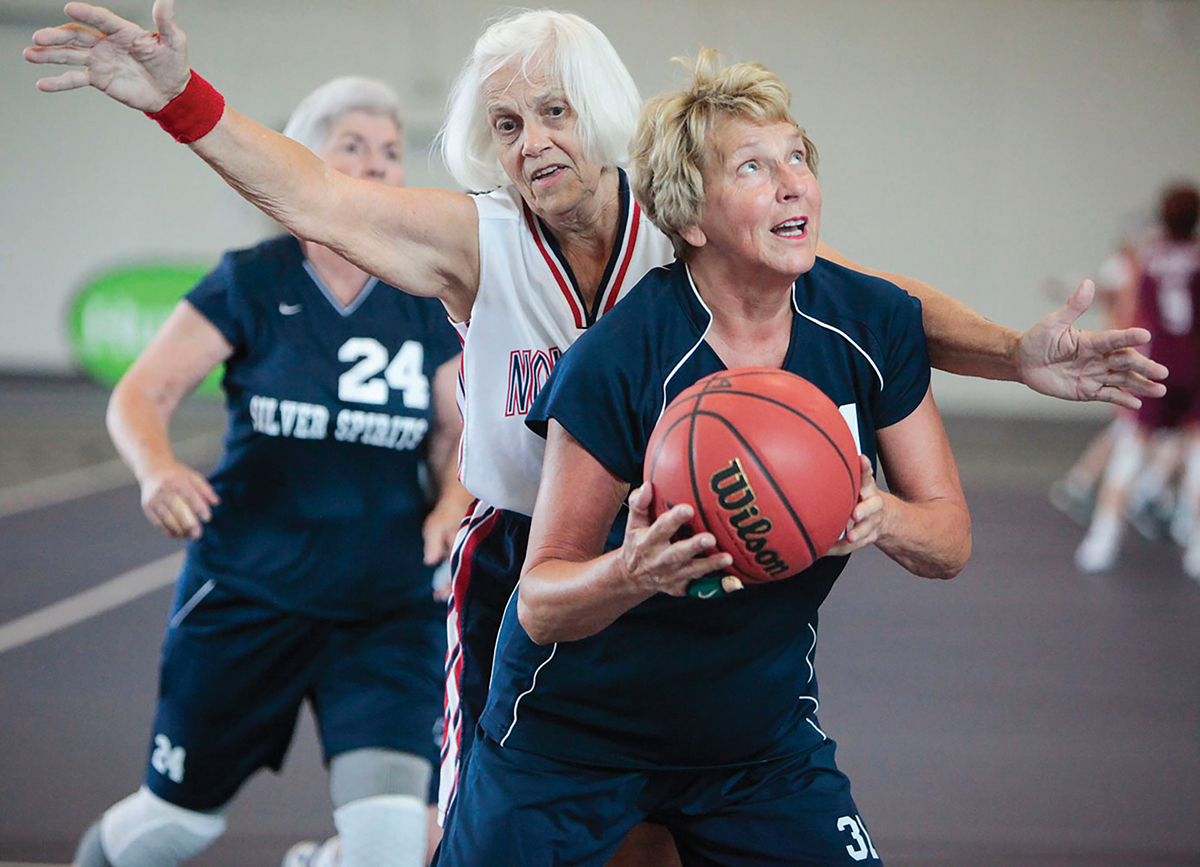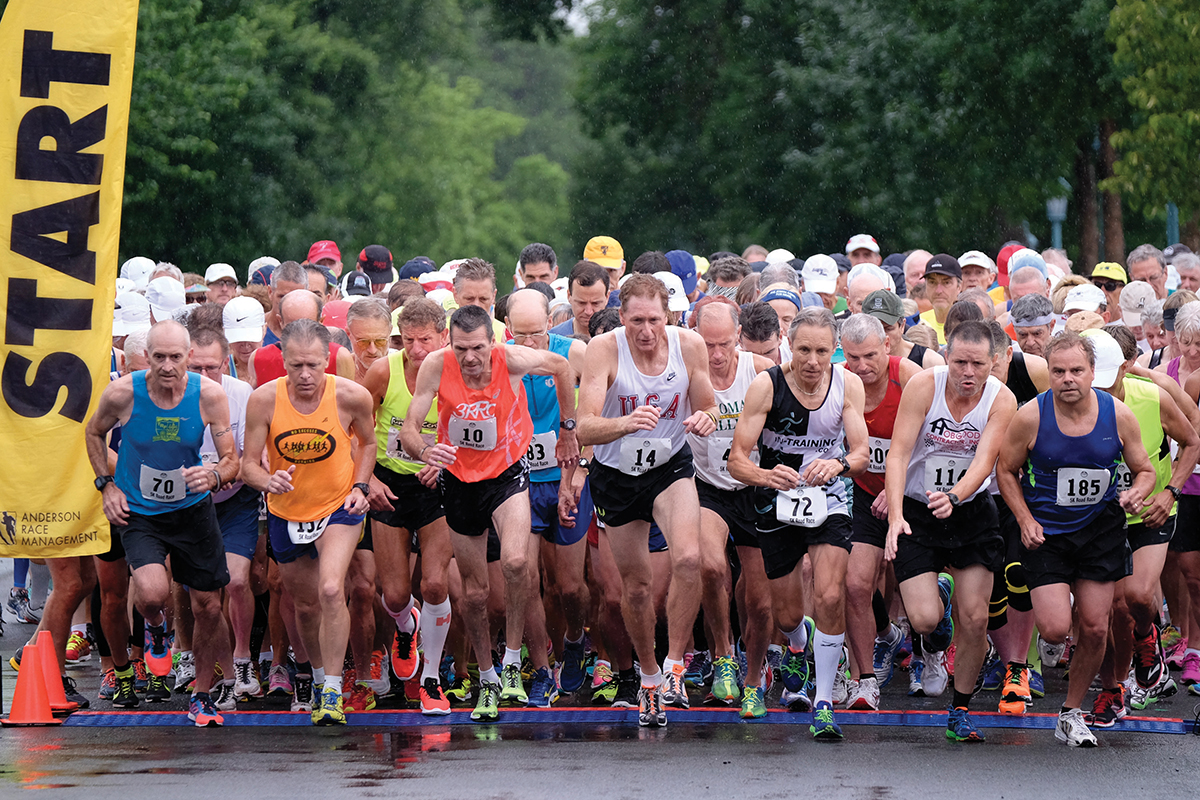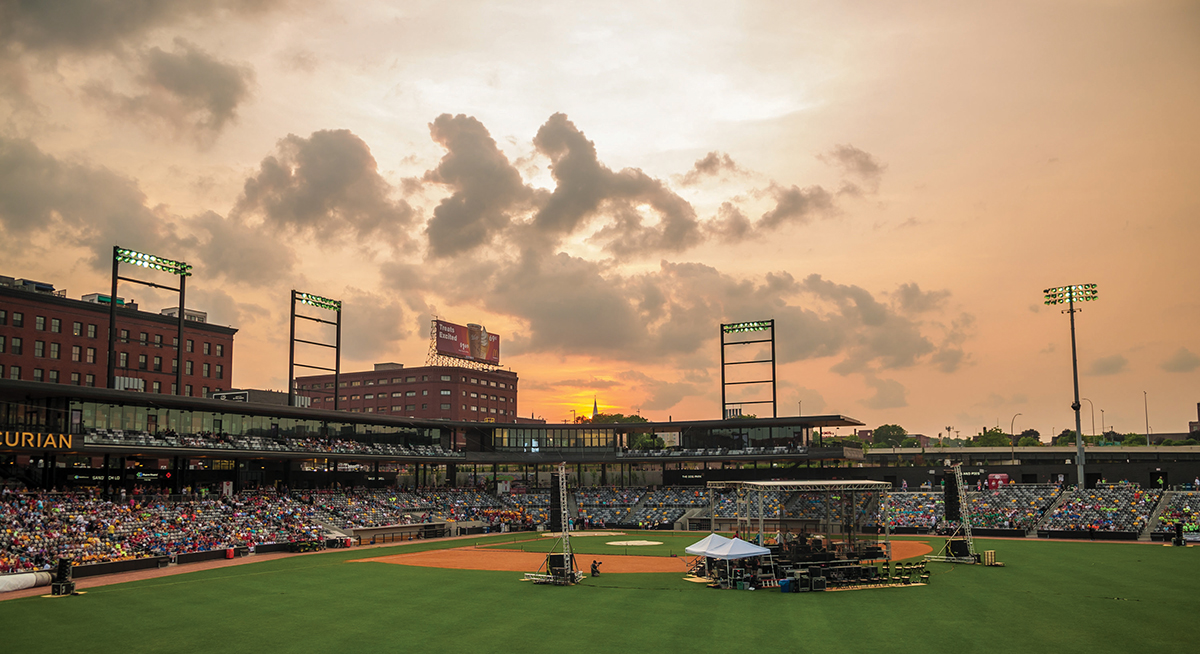

Our other numbers were great as well – our youngest competitor was age 51 (50 is the minimum age to compete) and the oldest was 104 – John Zilverberg of Highmore, South Dakota, who came into the Senior Games having medaled at the state level in two sports: field events (discus throw) and bowling. In addition, 101-year-old Julia Hawkins of Baton Rouge, Louisiana, ran the 50- and 100-meter races. 100-year-old upstart D. Paul Miller of Bloomington, Illinois, took part in the 50- and 100-meter races.
The event also drew more than 15,000 spectators and 20,000 tourists and gained a lot of positive media exposure. Obviously, it was a great success and spoke volumes about the fact that older generations are remaining active longer, traveling more and enjoying competing, as well as socializing with others.
Over the course of 30 years, we have learned a lot from our athletes. We’ve also seen certain trends emerge and all of those help us get a snapshot of senior athletes as a whole.
 More Men than Women Generally Participate: This past summer, we saw 5,813 men and 4,717 women registered as athletes. This is a typical cross-section; in fact, we saw the same type of split in 2015, 2013 and 2011.
More Men than Women Generally Participate: This past summer, we saw 5,813 men and 4,717 women registered as athletes. This is a typical cross-section; in fact, we saw the same type of split in 2015, 2013 and 2011.
But that Could Change: Many of our athletes were going to high school and college in the era before Title IX took effect (it was passed in 1972). At that time, there were fewer sports opportunities for women – and they weren’t encouraged to pursue athletic activities in general. By contrast, boys were encouraged to play sports and in school, to be varsity athletes. Over the years, many of them kept active and didn’t lose their competitive instinct, whereas women of that era might have come into sports later. As time passes, however, I think we are going to see a shift in that gender split, since so many women have been afforded more opportunities to play sports competitively and they’re obviously taking advantage of them.
People Really Enjoy Competing in Top-Notch Venues: Birmingham, like many of our host cities, has some very nice sports venues. The Birmingham Crossplex, for example, where we hosted swimming and volleyball, was phenomenal. Two of the three golf events were held at the Robert Trent Jones Golf Trail at Oxmoor Valley and Ridge courses – who wouldn’t want to play there? Samford University, UAB and Birmingham-Southern College were also great venues – as were so many others.
Next year, our event will be in Albuquerque, New Mexico, and once again, we’ll be hosting several events at the local university in Albuquerque. One great opportunity we’re looking forward to is having some of our basketball teams play at The Pit, formally named Dreamstyle Arena, one of the top collegiate venue in the nation. It’s also home to one of the finest endings in the history of a NCAA Final Men’s basketball Game, the 1983 Game between Jimmy Valvano’s North Carolina State Wolfpack and the Houston Cougars.
Excellent facilities add to the appeal of competing at the Games and definitely give people an incentive to qualify for and compete in future Games.
 The City Itself Also Plays a Big Role: People really like to sightsee when they’re not competing, or if they happen to be there with their families and friends. Birmingham offers great restaurants, history and a lot of culture, which meant our people wanted to stick around and explore. From an organizer perspective, we found the city, including the convention center staff, to be phenomenal in terms of support and information. You really do cultivate relationships when you work with people on an event like this.
The City Itself Also Plays a Big Role: People really like to sightsee when they’re not competing, or if they happen to be there with their families and friends. Birmingham offers great restaurants, history and a lot of culture, which meant our people wanted to stick around and explore. From an organizer perspective, we found the city, including the convention center staff, to be phenomenal in terms of support and information. You really do cultivate relationships when you work with people on an event like this.
Next year, we know that people will be interested in exploring Albuquerque’s cultural attractions in their off-time. There will be opportunities for people to learn about the tribes and visit the pueblos. Santa Fe is only an hour away, meaning it’ll be great for day trips.
Trends in Sports Will Impact Your Event: In 2011, we added pickleball as an exhibition sport. It was well attended in Cleveland in 2013, so it was added to our 18 other sports. We had approximately 360 players, which is great. The next cycle, in Minneapolis in 2015, we had over 600 players. In Birmingham in 2017, we had 891 players. Many state associations have opened enrollment for competition in their pickleball events, and even though those events are months away, they are already filling up.
We’re always asked about the process of adding sports to the National Senior Games and in 2019, we’ll be adding power walk. We do get calls about adding in other sports, such as weightlifting and powerlifting, and those certainly work with our health and wellness focus. We have also had inquiries about soccer, billiards, synchronized swimming, diving and disc golf. In many cases, the suggestion is made by someone – or by a group of people – who really have a passion for a specific sport. Unfortunately, a sport needs to be sustainable, meaning we have to know that people want to play, that we have the facilities for it and that multiple state associations are hosting competitions in that sport so that people have a chance to qualify and then to have a meaningful competition at the national level. That’s why it’s important for us to see what is up and coming. Who knows? Maybe in a few years, we’ll see a demand for gaming.
The next five to 10 years could bring some big changes in the sports we’re hosting. For example, not as many members of the younger generation seem to be playing golf and that could impact registration in years to come.
 The Climate of Your Area Affects Your Athletes: While Alabama has a reputation for hot and humid weather in the summer, we were very fortunate. Although we’d planned earlier starts for our more vigorous outdoor events, such as our 5K, just to make sure people avoided the worst of the heat, we were lucky in that it wasn’t as hot as it could have been.
The Climate of Your Area Affects Your Athletes: While Alabama has a reputation for hot and humid weather in the summer, we were very fortunate. Although we’d planned earlier starts for our more vigorous outdoor events, such as our 5K, just to make sure people avoided the worst of the heat, we were lucky in that it wasn’t as hot as it could have been.
Our next event, in 2019, will be held in Albuquerque. And while Albuquerque’s climate in the summer is known for a dry heat, the area will also be at a higher altitude than many of our athletes are used to. We know that altitude can play an enormous role in athletic performance – and more important, that it can adversely affect people’s health. As a result, we plan on increased communication to discuss the altitude and to make sure people take adequate precautions, such as staying hydrated, not drinking as much alcohol (which can exacerbate altitude sickness) and even arriving a day or two early in order to get acclimated.
Remember that Different People Attend Senior Games for Different Reasons: At the National Senior Games Association, we have come to realize there are two distinct types of athletes who attend. One type is the dedicated competitor. That person is in it for a medal, or at the very least, a personal best or an improvement upon their last performance – along with the socializing with other athletes afterwards.
The other type of competitor will come for the experience. They’re there for the sports, of course, and they are looking forward to competing, but they’re also going to want to explore the city, do some sightseeing, hit the restaurants and catch up with the friends they made the last time. Often, they’ll travel in the company of family members – sometimes with a large group who will come to the event to cheer them on. To them, the experience of the Games goes well beyond the actual competition. Keeping both types of athletes happy is essential.
As the population ages, and as more adults stay active, we can count on seeing these athletes continue to participate in sports – and not just ours, either. At the recent 2018 USATF Masters Indoor Championships, four world records were set by athletes 100 years or older. It’s clear this demographic is here to play. SDM

